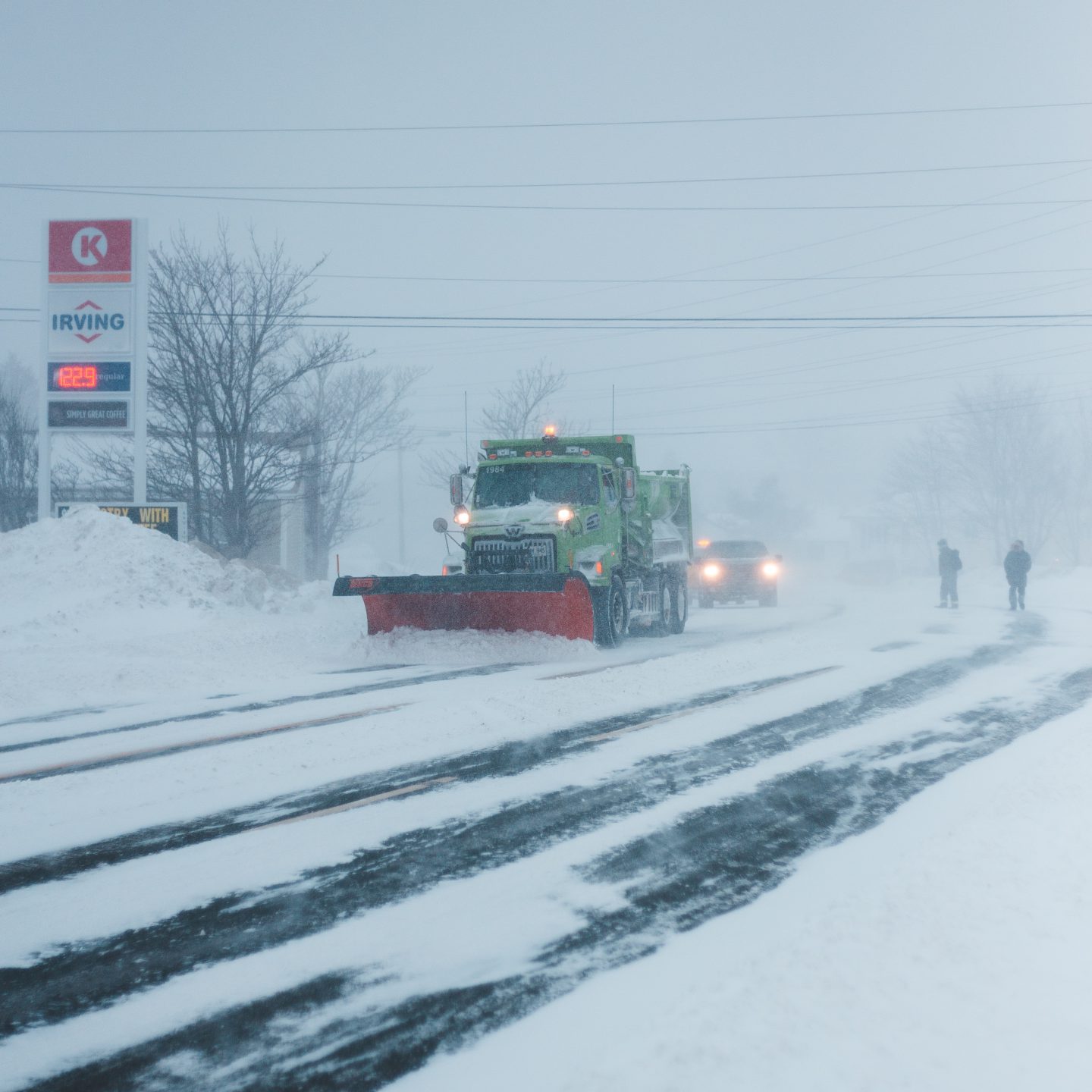The calendar may indicate that it is still fall, but winter is quickly approaching. It’s time to grab your toques, scarves and mittens. Environment Canada has already issued a number of snow squall warnings in and around Calgary, which can pose a significant threat to drivers. Keeping in mind the dangers that winter weather, such as sudden squalls, black ice and storms in general can pose to drivers, we wanted to provide some tips for keeping safe and avoiding serious motor vehicle accidents.
Winter Weather Threats to Drivers and Pedestrians
Snow Squalls
Snow squalls are quick bursts of heavy snow. They can travel up to 60 miles per hour and are very brief, lasting less than an hour. Unlike flurries, snow squalls can accumulate significant amounts of snow and are accompanied by strong winds. A snow squall’s strong winds and snow can create sudden white-outs and the drop in temperature can make them very dangerous, especially to those driving on highways who are not expecting sudden slick roads or reduced visibility.
Black Ice
Black ice is another danger to drivers, and it particularly problematic because the driver is unlikely to see it until it’s too late. Black ice accumulates when rain falls while the air is below zero degrees celsius. The water freezes on impact with road surfaces, making the road instantly slick and difficult to maneuver. However, since the ice is clear, drivers are generally unaware of its presence until their car is sliding.
Multi-Vehicle Collisions and Pile-Ups
Due to a sudden change in weather conditions, chain-reaction pile-ups may occur, particularly in high-traffic areas where drivers are travelling at high speeds. Drivers can easily lose control of their vehicles, creating new dangers for those behind them who may not be able to see what has happened.
In January 2013, an 80-car pile-up near Oshawa, Ontario shut down one of Canada’s busiest highways due to snow squalls and unfavourable weather. Five people were taken to hospital, two of which were found to have life-threatening injuries. In December 2019, a snow squall in Pennsylvania caused a 30-vehicle crash that killed two people and injured 44.
Defensive Driving Techniques to Avoid Injury
The lawyers at Cuming & Gillespie LLP would like to provide the following tips to assist when your region is expecting potentially dangerous weather conditions.
- Check road conditions and forecasts before driving. Preparation is key to avoiding potentially dangerous conditions. It is important, especially during the winter, to check forecasts and road conditions before heading out to be better prepared.
- Stay where you are. If you are at home, at work or shopping, do not start driving until the snow squall has passed. If you are driving, consider pulling over to a safe area before the squall arrives (not the shoulder, but a gas station or rest area).
- Observe your surroundings. If you do not receive a weather warning of an upcoming snow squall, there are times when you can see a snow squall coming. If you are driving and you see a snow squall advancing toward you, try to pull off the road somewhere safe. Snow squalls often arrive quickly, and they tend to pass just as fast. If you have a thermometer in your car, pay attention when the outside temperature gets close to 0, and exercise extra caution at those times.
- Wait it out. If you find yourself facing reduced visibility, it is safest to pull over to a rest stop or gas station or at the very least the side of the road, if possible, to wait until conditions are safer.
- Reduce your speed. The best defense in reduced visibility, or in slippery situations, is to reduce your speed. This gives you greater control should you need to react quickly.
- Keep a safe distance. If the car in front of you has to slow or stop suddenly, you are much more likely to hit them if you don’t have enough time to react. You can proactively protect yourself by keeping enough space between you and those around you to slow down if necessary.
- Never slam on your brakes. Although your instincts might tell you to slam on your brakes when a whiteout hits, this behaviour will increase your chances of getting rear-ended or sliding off an icy roadway. It is recommended that you slow down and try to keep a distance from the car in front of you.
- Keep headlights on. Be sure to have your headlights on during a whiteout, and if you need to, turn on your emergency hazards to alert other drivers to proceed cautiously. Flashers will also give drivers more of an opportunity to see your vehicle.
- Keep an emergency kit in your vehicle. It is always important to keep an emergency kit in your vehicle containing drinking water, food, a blanket, a first-aid kit and a flashlight. A shovel, sand or kitty litter, ice scraper, safety flares or reflective triangles and jumper cables are also useful items that can help if you are in an emergency while driving, especially during the winter. Being prepared is always the best defence in safe driving.
If you have been injured in a multi-vehicle accident that was caused by someone else’s negligence during a snow squall or other weather-related event, you have a right to seek compensation. Claims for personal injuries suffered in accidents involving multiple vehicles can be extremely complex. It may be difficult to determine which vehicle caused the crash. The lawyers at Cuming & Gillespie LLP have the skill and experience to evaluate your case and help determine the best course of action.
If you or someone you love has suffered a serious personal injury or been involved in a motor vehicle accident resulting in personal injuries this winter, contact the experienced personal injury lawyers at Cuming & Gillespie LLP online or at 403-571-0555 for a free consultation. We look forward to helping you obtain the compensation that you deserve.

